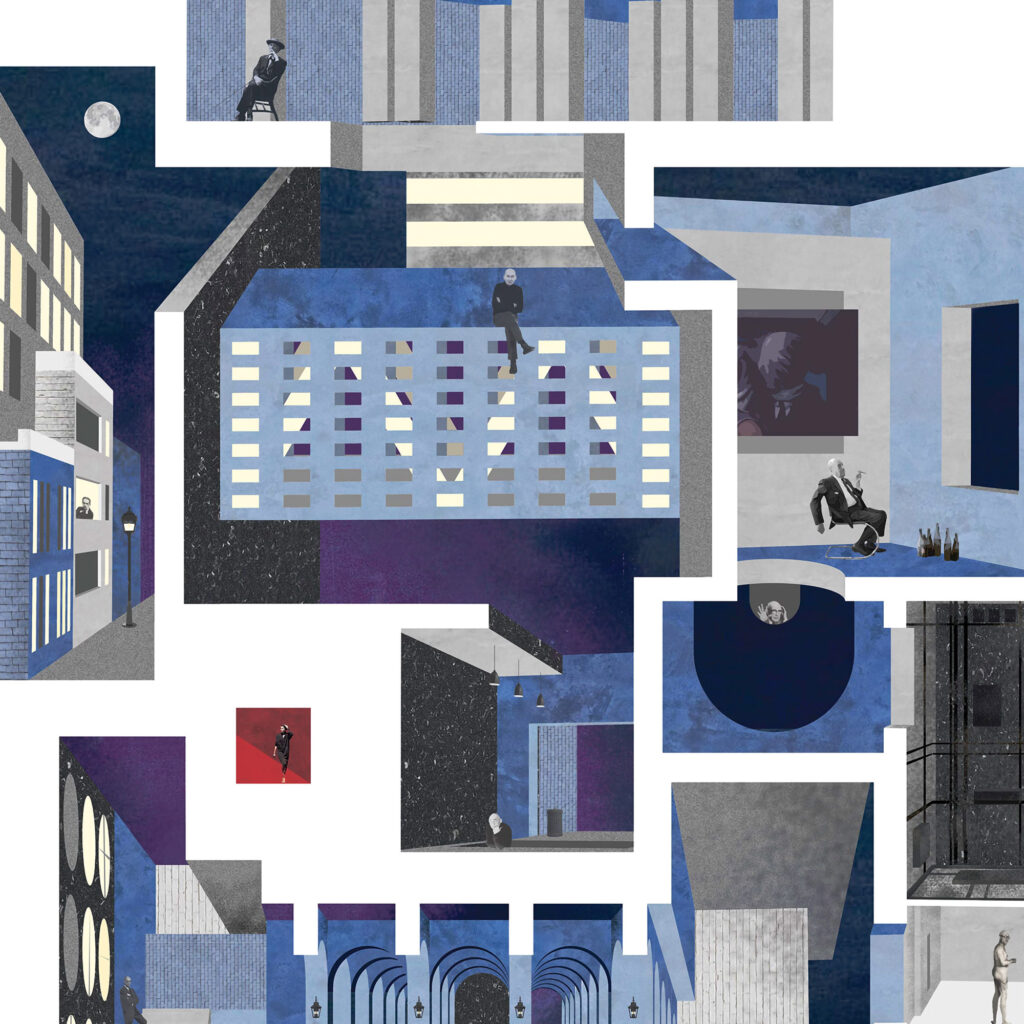
How Technological Feats Fuel Our Utopic Visions

Texas has lost one of its architecture giants. Ron Wommack, FAIA, one of the most celebrated architects in the state, and a beloved friend, died on June 30, 2024. He passed away suddenly, at his home, while casually talking with his wife, Joy, about his favorite subject: architecture.
Ron was born in 1950 and grew up in Abilene. He graduated from Texas Tech University in 1976, and following years of apprenticeship with Frank Welch and with the Oglesby Group, Ron established his own practice, Ron Wommack Architect, in 1990. He kept his practice small, sometimes working solo and sometimes collaborating with colleagues and assistants. Despite the modest size of the practice—or perhaps because of it—Ron’s work was recognized by his peers at AIA Dallas and the Texas Society of Architects with numerous design awards. For the last several years, it seemed that everything that he did was bound to win an award. The simple elegance of his architecture was appealing and enduring, rooted in a solid understanding of construction materials and techniques, and on a refined sensibility for light, proportion, and rhythm.
Ron worked across different project types, but he showed superb command of scale in his residential work. His houses and townhomes have a lyrical character in the way that they are assembled and in how they relate to their site and context: a graceful corner here, some dappled light over there, a cadence of volumes, spaces, and geometries that was never accidental, but rather choreographed to bring a sense of delight and reassurance. Being in one of Ron’s buildings reminds you of the essential values of architecture, values that eschew trends and go instead for what endures and is permanent.

And isn’t it interesting how buildings at times reflect their designers’ characters? Am I the only one to have noticed how a certain well-known and circumspect architect has created work that is austere and precise? How another, keen on philosophical musings, gave us buildings that ask to be analyzed and deciphered? And how yet another, who was socially minded, left us work that promotes the collective over the individual? Likewise, I like to think that the lyricism in Ron’s buildings was a reflection of his own character. Those of us lucky to have known him will remember the endlessly curious mind, the generous heart, the bluntly honest—and sometimes unfiltered—opinions on the profession, the devoted mentor to younger peers, the teacher, the loyal-for-life friend. Same in character as in architecture, what you saw is what you got: open, inspiring, honest, expressive, delightful. Or, in one word, lyrical.
A true lover of books, Ron was a voracious reader. His personal library is legendary, and he shared it generously with many. It wasn’t uncommon for Ron to show up for a meeting, dinner, or coffee chat with a new book, either as a gift or as a conversation starter. It was he who, a long time ago, introduced me to the work of Juhani Pallasmaa. Pallasmaa’s critique of contemporary architecture, calling for a holistic and enlightened take on our profession and our craft, resonated deeply with Ron. He also delighted in finding out and learning about other architects; Ando, Chipperfield, RCR, and, most recently, Neri&Hu, were among a long list of his personal heroes.
Ron served our profession generously and was in turn recognized by peers for his achievements. He was a Fellow of the AIA, an adjunct professor at the University of Texas at Arlington, a visiting critic at Texas Tech, and a past president of the Dallas Architecture Forum. He also chaired a number of committees at AIA Dallas, including the Design Awards Committee, Small Firms Roundtable, and 2024 Fellows Network. Ron’s firm was recognized as the AIA Dallas 2006 Firm of the Year, and his work garnered more than a dozen design awards throughout his career. Last year, the Texas Tech University Huckabee College of Architecture honored Ron posthumously with its Distinguished Alumnus Award. He would have been so proud.
Texas has lost one of its architecture giants—but a gentle giant. Ron loved life, he loved his profession, and he loved his friends, who in turn loved him back and will miss him forever.
At the 2020 TxA Design Conference in El Paso, I was standing in a courtyard of a home with a spectacular view, typing emails into my phone as I dealt with a (seeming) project crisis. Ron quietly approached and said, “Is that more important than this view? You will never experience this moment again.” As usual, he was right—about being present in the moment and looking deeply.
—Gregory Ibañez, FAIA
A brilliant man with a big heart, a true philosopher who loved design and brought great vision to his projects, Ron was president of the [Dallas Architecture] Forum Board (2003-2005) when I became the executive director. I vividly remember when Ron called me on behalf of the Forum Board’s search committee and offered me the position almost 20 years ago. I enjoyed working with him and learned so much from Ron through the years, and his legacy will continue to impact the Dallas design community.
—Nate Eudaly, Hon. AIA
I met Ron 42 years ago when we both worked at the Oglesby Group. He lived an architectural life, reflected in his deep love of buildings, the city, and people; reflected in his extraordinary personal library; reflected in the fact that at any architectural gathering (lecture, tour, exhibition), there he was, quietly beaming with enthusiasm.
Ron cultivated his architectural inspirations as an antidote to the headwinds we all battle; he wove them into his beautiful work and daily life, and then shared them generously with all his friends and colleagues. You might say he helped all of us keep going.
—Max Levy, FAIA
I’ll never forget the first time he came to my studio. He was looking at my paintings and sculptures and asking a lot of fascinating and somewhat challenging questions. I always looked forward to his philosophical questions and his wealth of knowledge. His childlike humility, all wrapped up in that big old bear of a body, made me feel so comfortable sharing my thoughts, questions, and fears. The most important aspect of our friendship was, I believe, a spiritual connection. I’m not saying we talked at all about religion, and, to be honest, I don’t even know what Ron’s thoughts were about it, but we talked about very big things, mysterious things, spiritual things, and Ron pushed me and encouraged me. I was really devastated when I learned of his sudden death, and although there is now a void in my physical experience, I just have to think about Ron, and I keep painting. It’s a spiritual thing.
—Jim Wilson, AIA
My earliest memories of Ron are from our architecture school days at Texas Tech in the 1970s. Being a year or two behind him, I was taken by his willingness to engage and encourage me as an underclassman, which was something I will never forget. It was an element of his character that he carried throughout his life.
His tenure at the offices of Frank Welch and Bud Oglesby sharpened his focus as a designer, reinforcing a talent and sensibility that he continued to refine in his own practice. His humble, self-effacing demeanor belied his willingness to quickly engage in a well-informed discussion of the design topic at hand.
My last memories of Ron were at the most recent TxA Design Conference in Arkansas. More than once, we found ourselves on a bench resting our aging knees and enjoying each other’s observations about the exceptional architecture (by the likes of Fay Jones and Marlon Blackwell) we were experiencing. Those were the eternally bonding moments that will endure when I fondly remember Ron. He will be truly missed.
—Mark T. Wellen, FAIA
Ron was a vital member of the architectural community in Dallas. His passion for modern architecture was contagious, and he has left us with an oeuvre of memorable and striking residences and projects.
—Willis Winters, FAIA
My friend Ron was obsessed with his beloved profession of architecture. I state that as both an observation and in admiration of such fervor.
We all know and admire peers who can “talk the architectural talk,” yet only few can also so keenly “walk the walk.” Ron was rarefied in his mastery of both, interweaving his vast curiosity, research, and accrued knowledge with an innate skillset that he channeled so beautifully into his deft designs.
As one’s architectural profession inevitably draws to conclusion, Ron in turn found complementary avenues to “recharge” his architectural battery via teaching, posting inspiring architecture, advocating for a new Dallas architecture school, chairing the AIA Fellowship committee, and other advocacies. Such ventures weren’t just personal, but for and in the spirit of the profession and community at large. May Ron’s zest inspire us to keep recharging.
—Joe McCall, FAIA
When I moved to Dallas as a young architect, I was eager to learn about the local architecture scene, and Ron Wommack’s townhome projects in Uptown and Deep Ellum quickly caught my attention.
When I finally met Ron, I realized that he was not only an incredible architect whose sensibilities around scale, light, and space were so fine-tuned, but that he was also an amazing human, always willing to share his knowledge and eager to learn from everyone around him. During our coffee meetings, I wanted to slow time down so I could take more notes, ask more questions, and hear more about his thoughts on architecture and life.
He was excited to be involved in different things and committees, curious about everything, always present, always listening and observing, even in ordinary scenarios. Ron was one of the kindest souls, and his presence was felt everywhere he went.
Dallas lost a phenomenal architect, and the architecture community lost a teacher and a colleague. And some of us lost a life mentor and a friend. He is missed beyond words.
—Andrea Alvarez
I knew Ron for 51 years, after meeting in 1973 in the Texas Tech Department of Architecture where he was several years ahead of me. Nonetheless, we became part of a group of pre-computer students whose convictions were not focused on business but rather on ideas and their material existence. My college term “poetechnical” attempted to describe this mutual embodiment and complex depth of meaning.
Over the years, our friendship grew, and our world view was always “larger” than the usual Texas practice. As small firms (mostly sole practitioners), we shared interests in firms around the world and their work as published in renowned monographs and journals. Abitare, Lotus, Casabella, Electa, and others from the ’70s and ’80s—prior even to Spanish journals like El Croquis—were to be discussed and appreciated. In the Panhandle deficit of the time, these were like rare candy to aspiring professionals.
Ron’s interest in Harley-Davidson Sportsters and annual rallies in Sturgis tied conceptually to the freewheeling aspects of his sensibility. He juggled such things, and we talked when possible while deep in work.
His smile was infectious to me, his talents immense, and I will miss him very, very much.
—W. Mark Gunderson, AIA


How Technological Feats Fuel Our Utopic Visions

An Ambitious Office Tower Redefines Urban Sustainability

Exploring the Perils and Delights of Houston’s Irreverent Approach to Urban Development

A Family’s Legacy of Excellence
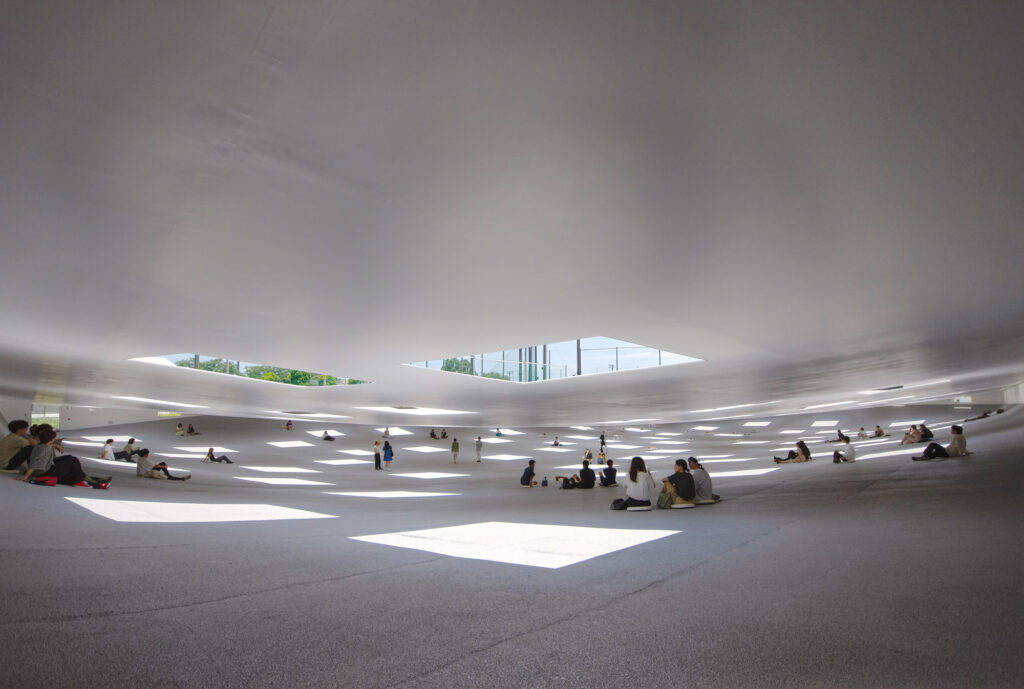
How Can Utopic Ideals Be Engaged in Everyday Life?

Picture-Perfect Charm Along the Texas Gulf Coast

PS1200 Builds a Backdrop for Public Life
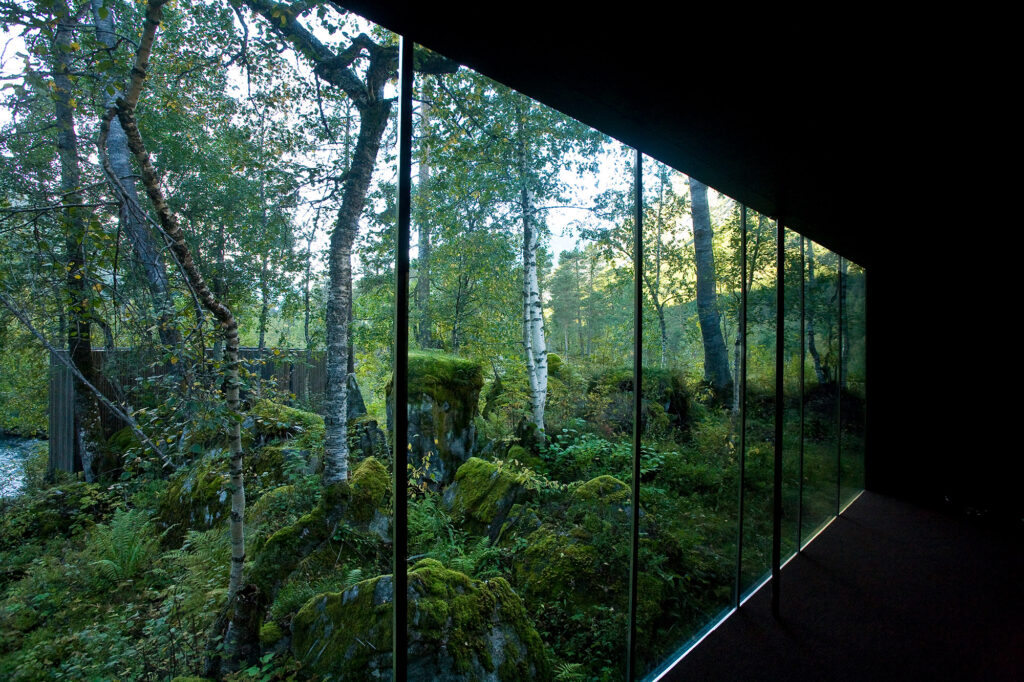
Exploring the Parallels Between Science Fiction and Architecture
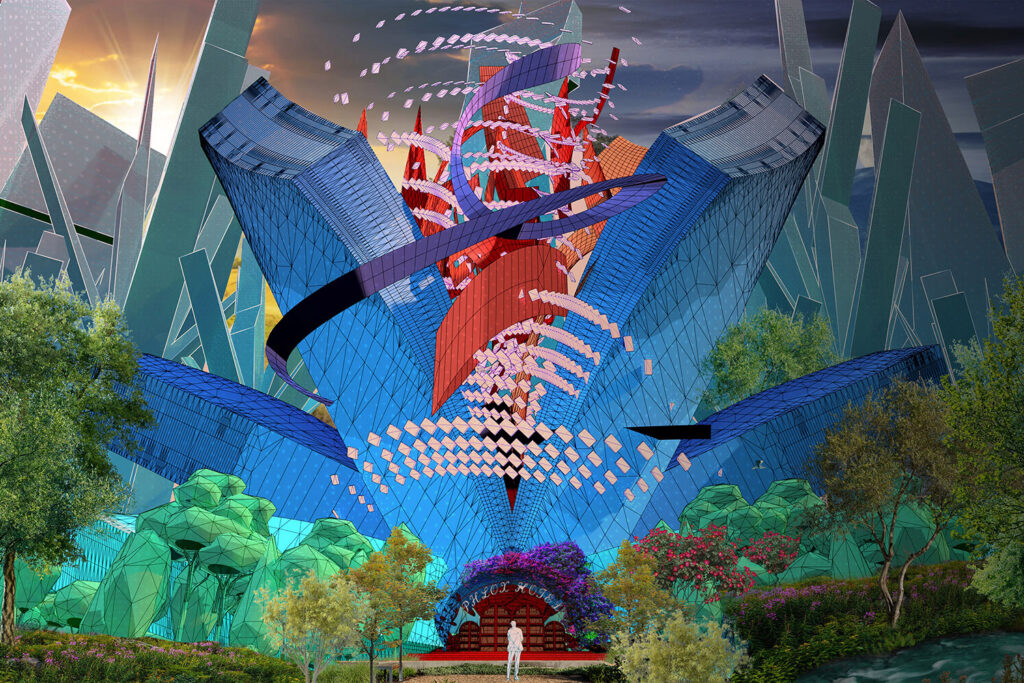
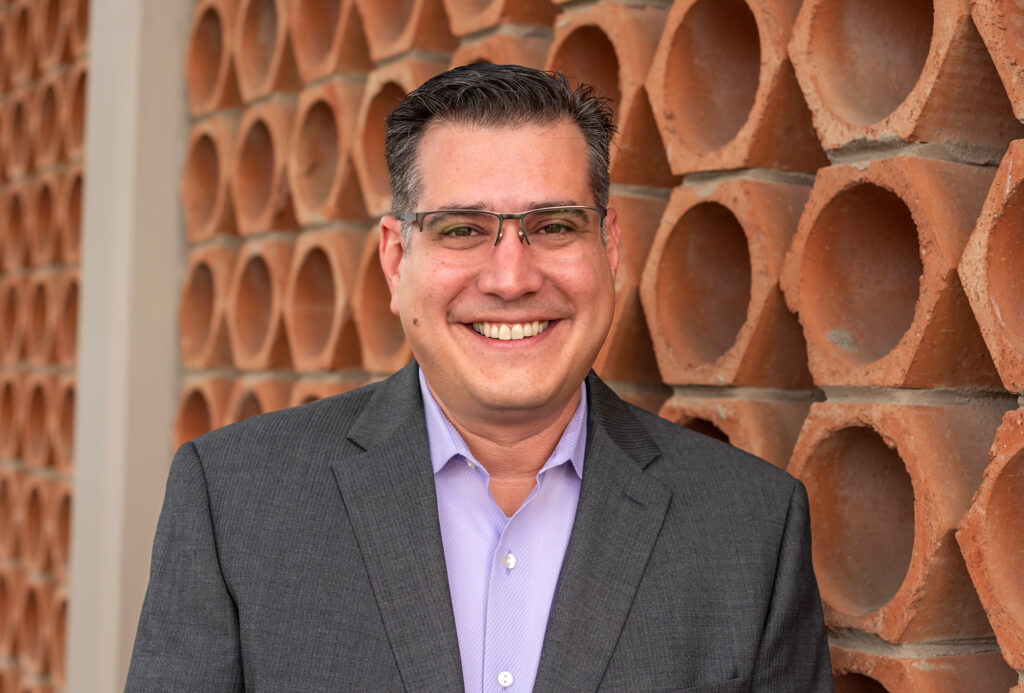

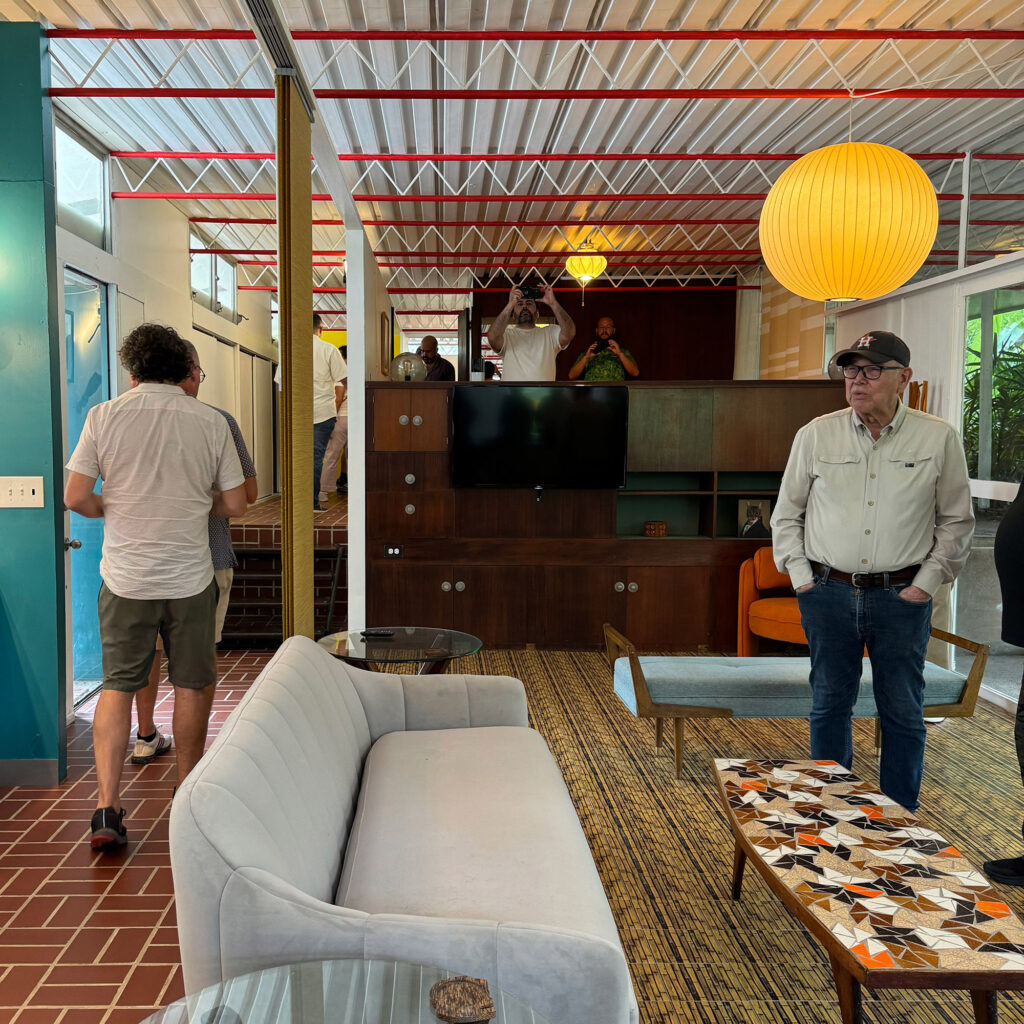



Illuminated Wood Panels, Inserts for Brick Walls, and Fixtures Made from Recycled Plastic, Mycelium, and Hemp
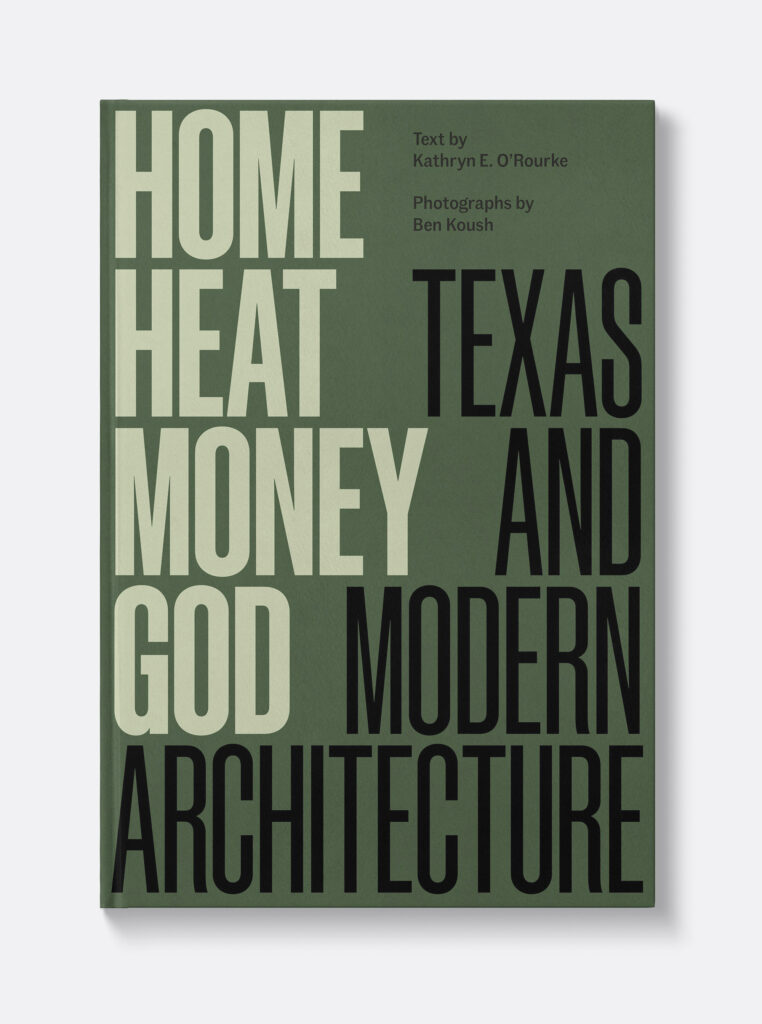
Home, Heat, Money, God: Texas and Modern Architecture
Text by Kathryn E. O’Rourke
Photographs by Ben Koush
University of Texas Press, 2024

Big Little Hotel: Small Hotels Designed by Architects
Donna Kacmar, FAIA
Routledge, 2023

I. M. Pei: Life Is Architecture
M+ Museum, Hong Kong
